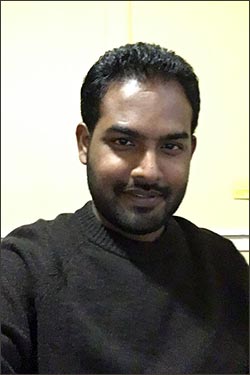Graduate Research Scholars
About | Application | Current Scholars | Past Scholars
2020 Scholars
Mohd Manzar Abbas
Louisiana State University
What I Do: I am looking at occurrence and diversity of vibrio and BALO in Gulf of Mexico water and in filtered sea water used in Louisiana Sea grant’s Oyster lab. The purpose of study is to identify the dominant species of vibrio and BALO and figure out a strategy to control vibrio population using BALO. For another project I am looking at antibiotic resistance in the Mississippi river.
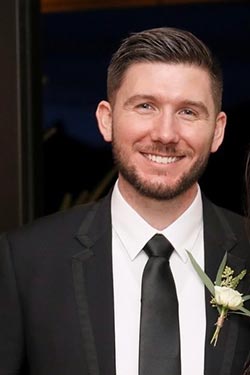 Colin Anderson
Colin Anderson
Louisiana State University
What I Do: I am assisting in the development of a modular engineering class curriculum that educates students about FEMA’s Base Level Engineering (BLE) and how to use its tools. The intent of the curriculum is to teach students how to use these tools so they can implement mitigation strategies at engineering firms. In addition, a component of the curriculum will include community outreach as a means to identify mitigation priorities and refine the BLE.
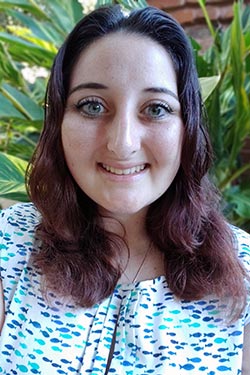 Gina Badlowski
Gina Badlowski
University of New Orleans
What I Do: My research focuses on the impacts of vessel noise on the Sciaenidae species Micropogonias undulatus (Atlantic croaker). Specifically, the impact of vessel noise exposure on their hearing sensitivity and sensory hair cells within their ears. This species of fish utilizes vocalization for communication purposes that may be essential for reproduction. Increasing vessel noise may affect the hearing capabilities of this species and hinder the ability to hear conspecific calls due to damage of their sensory hair cells within the ear, leading to greater behavioral effects on an individual and can potentially have a cascading effect on the population and ecosystem.
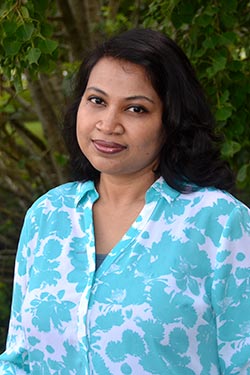 Nazla Bushra
Nazla Bushra
Louisiana State University
What I Do: My research goal is to understand the current and projected relationship between the four-dimensional (x, y, z, t) feature-based circumpolar vortex (CPV) structure, ocean-air teleconnections, and natural hazard impacts, specifically over Louisiana. An improved measurement and characterization techniques of the daily CPV at 700, 500, 300, and 200 geopotential height levels has been developed to investigate any causal association of CPV variability to teleconnections (synchronously and at various time lags), and assess economic impacts of variability in CPV centroid location, area, and/or circularity (CLAC) on extreme weather in Louisiana, using an existing property loss data set.
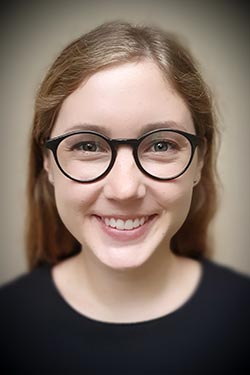 Taylor Cagle
Taylor Cagle
Louisiana State University
What I Do: My research is on quantifying the flows of the lower MS River using a movable bed physical model. Understanding more about the discharge through the lower passes will allow me to study the effects of relative sea level rise on the flows and sediment discharge leaving the river, including major implications on the future of the surrounding wetlands.
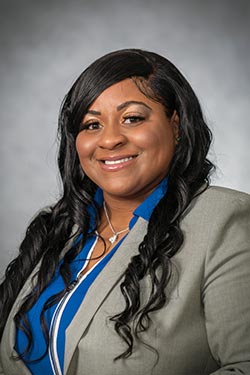 Tiffany Chaney
Tiffany Chaney
Louisiana State University
What I Do: As a Louisiana State University Law & Policy Program Legal Intern, I have conducted research on Harmful Algal Blooms (HABs). HABs occur when algae grow out of control while producing toxic or harmful effects on people, fish, shellfish, marine mammals, and birds. The human illnesses caused by HABs, though rare, can be debilitating or even fatal. The Louisiana Sea Grant conducts research that commercially harvested fish and shellfish are safe to eat. HABs have been reported in every U.S. coastal state, and their occurrence may be on the rise.
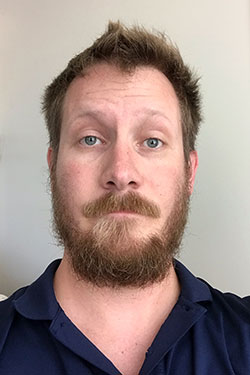 Cameron Keith Dorsett
Cameron Keith Dorsett
Louisiana State University
What I Do: My research is focused on developing a forecasting model for Harmful Algal Bloom (HABs) formation and occurrence at Lake Pontchartrain, Louisiana. By studying the current state of HAB detection in water bodies through available published literature, a direction for the PhD dissertation will be established. The forecasting model is to be developed using a suite of software and tools including but not limited to: RStudio, MATLAB, and modern watershed models.
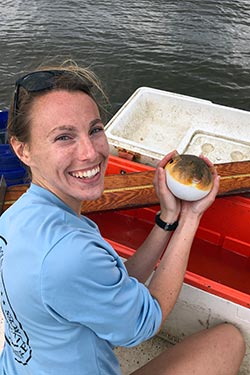 Gabrielle Fignar
Gabrielle Fignar
Louisiana State University
What I Do: The goal of my project is to understand the coastal-estuarine connectivity of southern flounder (Paralichthys lethostigma). With the use of acoustic telemetry, we hope to determine seasonal migrations inshore and offshore of this species. Coupling movement data with other environmental data such as water temperature and salinity will provide important information that can be used to inform future management decisions. With the southern flounder population in a decline, it is crucial that we understand their movement patterns as well as any environmental cues that may be influencing them.
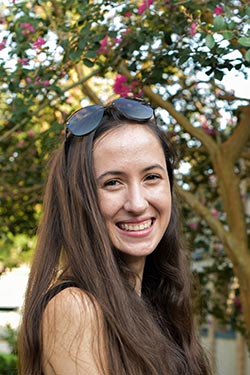 Olivia Floyd
Olivia Floyd
University of Louisiana at Lafayette
What I Do: I study the impacts of off-shore sand dredging in the Gulf of Mexico on the structure and productivity of microphytobenthic communities. Specifically, I focus on an area called Ship Shoal, an ecologically productive sand shoal approximately 10 miles off the coast of Louisiana. BOEM (Bureau of Oceanic Energy Management) has commenced sand dredging on this shoal in order to reallocate sand to the restoration of surrounding barrier islands. I am just a small part of the larger group of scientists conducting a bottom-up BACI analysis on the ecological repercussions of dredging Ship Shoal.
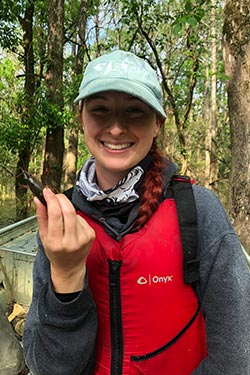 Coral Foster
Coral Foster
Nicholls State University
What I Do: Coastal Louisiana is experiencing catastrophic wetland loss. One of the large-scale tools planned for restoration efforts in these coastal environments is the construction of sediment diversions. However, prolonged inundation will occur in diversion outfall areas during diversion operation. The effects of extended freshwater inundation on the growth of key marsh vegetation species are not well understood. To help fill this data gap, I am running an inundation study to quantifying how four key herbaceous marsh species will react to deep and prolonged inundation caused by the opening of the proposed sediment diversions.
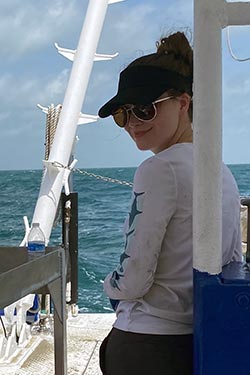 Emelie Foster
Emelie Foster
University of Louisiana at Lafayette
What I Do: My research focuses on understanding the effects of dredging activity on the fish populations and food webs on Ship Shoal, a highly productive sand shoal located 10 miles off the central coast of Louisiana. Ship Shoal is the largest sand resource in the Gulf of Mexico and has been used previously for barrier island and beach nourishment. I will use a Before-After-Control-Impact (BACI) design to understand the effects of planned dredging activities on fish and invertebrate populations densities and distributions. I will use stable isotopes to detect changes in the food web to quantify the ecological response to dredging.
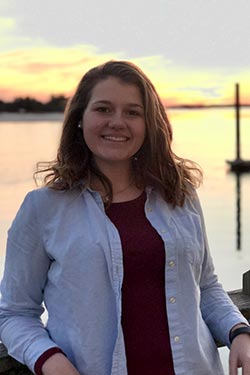 Mahala “Haley” Gambill
Mahala “Haley” Gambill
Louisiana State University
What I Do: My research is focused on understanding the environmental factors contributing to White Spot Syndrome Virus (WSSV), a disease in wild and cultured populations of red swamp crawfish throughout Louisiana. Through this project, on a macroscopic scale, we aim to 1. quantify historic spatio-temporal trends and 2. test environmental correlates against outbreaks of WSSV in farmed crawfish. There are currently anecdotal correlation of WSSV pond outbreaks to precipitation, temperature, watershed and bait. We will evaluate these hypothesized triggers for outbreak of WSSV and work with harvesters who are observing the effects of this disease first-hand.
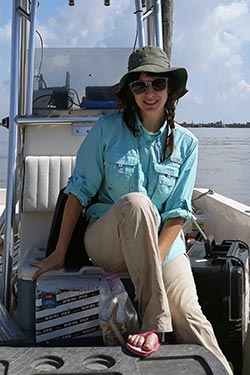 Katrina Ginsberg
Katrina Ginsberg
Tulane University
What I Do: I am researching how patterns of emergent and subaquatic wetland vegetation interact with flow and sediment flux to aggrade new land in the Fort St. Philips crevasse splay area. Wetlands surrounding this crevasse complex are an interesting natural analog for the Mid-Breton sediment diversion, and one goal of the study is to provide information about vegetation on evolving splays for sediment diversion models used by the State.
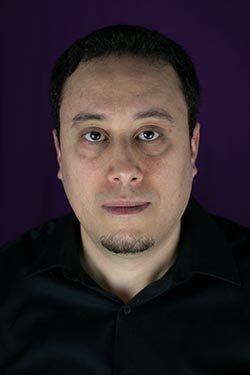 Ehab Gnan
Ehab Gnan
Louisiana State University
What I Do: Assessment of flood related risks and the evaluation of flood mitigation measures.
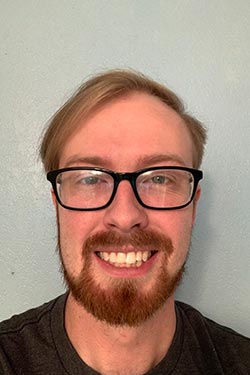 Sean Gordon
Sean Gordon
Louisiana State University
What I Do: I will be studying the impacts of eutrophication driven acidification in Barataria Bay in Louisiana. Recent modelling (Sundra and Cai, 2012) shows that eutrophication is a large, overlooked source of CO2 in coastal waters. This study also involves implications for oyster health since Barataria Bay has environmental and economic importance to oyster reefs.
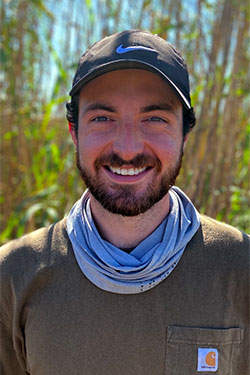 Casey Greufe
Casey Greufe
Nicholls State
What I Do: I am studying apple snail invasion dynamics using microsatellite data and hydrographic data. Dispersal of apple snails is limited by hydrological connectivity, but the nature of flood plains in Louisiana create a matrix of ephemerally connected water bodies, providing periodic opportunities for colonization of new areas. I aim to set genetically distinguished snail populations against a hydrological model incorporating connectivity, inundation, and other water-based stress factors to identify specific barriers to and opportunities for apple snail migration and colonization.
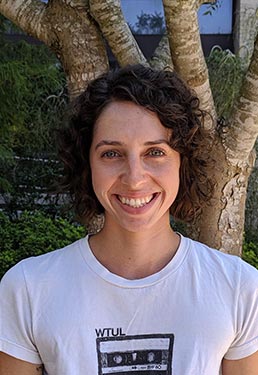 Susannah Halbrook
Susannah Halbrook
Tulane University
What I Do: I study the biotic and abiotic factors that influence soil microbial community assembly in wetlands. I am most interested in how microbial communities change through time. My doctoral research will experimentally test how short-term disturbances impact microbial community resistance and resilience to future disturbances. I will also track interannual community change with a five-year survey of six marshes to examine how annual environmental variation and invasion by a monoculture forming grass, Phragmites australis haplotype I (Roseau cane, common reed), impacts microbial community dynamics.
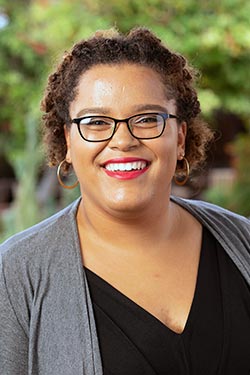 Courtney Nicole Hammond
Courtney Nicole Hammond
Louisiana State University
What I Do: We are researching how environmental disturbances and human activity impact the probability of harmful algal blooms (HABs) in Lake Pontchartrain. Our goal is to untangle the question of how toxic cyanobacteria species (e.g. Microcystics, Anabaena and Cylindrospermopsis) adapt to physical disturbances (e.g. turbulence, hurricanes, flooding, saltwater intrusion, etc.) in order to better understand what contributes to their success in dynamic environments. By understanding the response of these harmful species, we will be able to identify how bloom dynamics will alter with a changing climate.
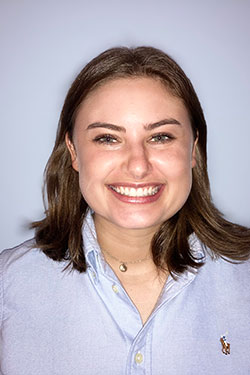 Elizabeth Harris
Elizabeth Harris
Louisiana State University
What I Do: The title of Dr. Quirk and I’s research is “The Factors Influencing Subsurface Wetland Dynamics in Coastal Louisiana: Implications for Wetland Response to Sea-level Rise and Restoration.” Essentially, we are seeking to examine the current CRMS data to understand why certain marshes are experiencing a rise in elevation in the subsurface zone, also known as the Zone of Shallow Subsidence. Our ultimate goal is to provide more information on subsurface wetland processes that will help to prepare our state going forward in terms of restoration and protection.
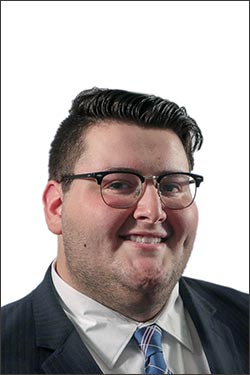 Maxwell Harsha
Maxwell Harsha
University of New Orleans
What I Do: Since I am in my first semester of graduate school my main project has yet to be determined. For now I am working to determine the chemical composition of jellyfish mucus through analytical chemistry techniques and instrumentation. Moon jellyfish mucus is of particular interest because it contains dissolved organic material and could play a role in the microbial degradation of oil. This can have important impacts on oil spills and jellyfish aggregations in the Gulf of Mexico.
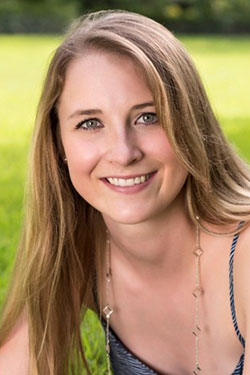 Chelsea Hess
Chelsea Hess
Louisiana State University
What I Do: My dissertation research utilizes an integrative approach to explore the multigenerational effects of parental crude oil exposure on development, morphology, and fitness in the ubiquitous marsh species the Gulf killifish. Thus far, I have found that there are negative morphological and fitness effects in offspring most notably when the father, or grandfather, experiences crude oil exposure. With Louisiana’s stake in both the oil industry and fisheries, my work aims to help inform both industries about the risks of crude oil exposure utilizing an ecologically relevant, vertebrate model.
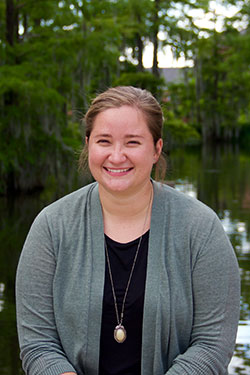 Andrea C. Jaegge
Andrea C. Jaegge
University of Louisiana at Lafayette
What I Do: My research aims to better understand how an increase in freshwater input, due to both natural and anthropogenic change, will alter estuarine environments and subsequently shift the phytoplankton communities that support our highly productive coastal ecosystems in Louisiana. Such a shift is likely to favor phytoplankton communities dominated by potentially toxic cyanobacteria which will impact estuarine food webs and overall ecosystem health. I have examined this through a combination of experiments studying oyster feeding responses, conducting field work during the record-breaking 2019 Mississippi River flood, and examining the presence of cyanobacterial toxins in our estuaries.
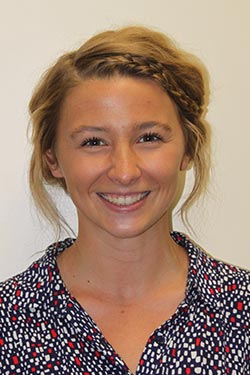 Amanda Kirkland
Amanda Kirkland
University of New Orleans
What I Do: My research focuses on how the lowering of the ocean’s pH affects species that use calcium carbonate to build their outer, hard structures such as corals and oysters. Many of these species make up the bottom tier of the food web on artificial reefs, man-made, underwater structures placed to promote the growth of marine life. I examine if acidification and warming will affect the bottom tier of the food web causing ripple effects up to important fishery species. This research has important implications in areas that rely heavily on the seafood industry as well as areas currently deploying artificial reefs.
 Anastasia Konefal
Anastasia Konefal
University of New Orleans
What I Do: Seagrass is a salt-water plant that does best in shallow coastal waters. Seagrass beds provide refuge for commercially important fish and shellfish and also buffer wave action preventing shoreline erosion. However, beds are decreasing at an alarming rate. Coastal development increases sediment and nutrient loading leading to poor growth conditions. Warming water temperatures are also causing loss as seagrass cannot adapt quickly enough to grow in a changing climate. I am investigating the synergistic impacts of these stressors on seagrass populations around the Gulf of Mexico and how an increase in seagrass diversity may help mitigate those effects.
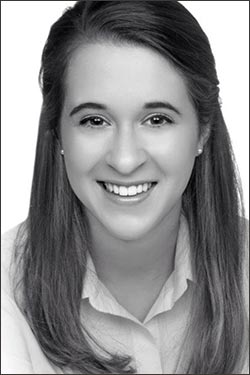 Sarah Catherine LeBlanc
Sarah Catherine LeBlanc
Louisiana State University
What I Do: My research is focusing on the long-term sustainability of created and restored oyster reefs across coastal Louisiana. I am examining basic oyster metrics such as reef density and size distribution on a temporal scale for restored oyster reefs that are a part of the Louisiana Oyster cultch project. Exploring this further is my analyses on the spatial trajectory of reef development and ecosystem services through the revisitation of 6 created reefs in Calliou Lake Louisiana. Through this research I am hoping to explore the possibility and sustainability of using oyster reefs as a coastal restoration tool.
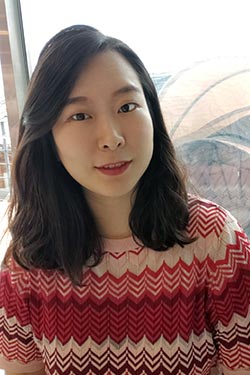 Jiyoung Lee
Jiyoung Lee
Louisiana State University
What I Do: I am a research assistant for developing an ArcGIS web-based map to disseminate economic aspects of increasing freeboard. Freeboard is usually elevating the lowest floor of the building by one to three feet, so people can minimize damages caused by floods. Therefore, our research team examines flood risk of individual buildings and provides maps to the public to inform the benefits of freeboard construction in Louisiana, especially in the coastal zone, which frequently suffers from flood damage.
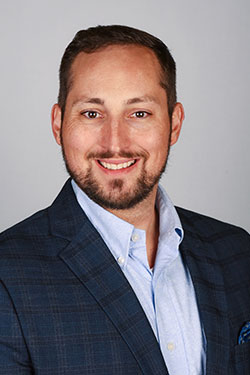 Brian W. Matherne
Brian W. Matherne
Louisiana State University
What I Do: My research seeks to provide an innovative biological control solution for oyster hatcheries. Larval oyster production needed for aquaculture and coastal restoration has long been hindered by diseases caused by naturally occurring pathogens in seawater. Working with local oyster hatcheries we hope to gain a better understanding of which pathogens are often causing mortality of 50% or more of the larval oyster stock, while also identifying how to effectively use the beneficial bacteria, Halobacteriovorax, to safely control harmful bacteria. Furthermore, these probiotic bacteria could be used in applications where broad-spectrum antibiotics are not only harmful but against FDA regulations.
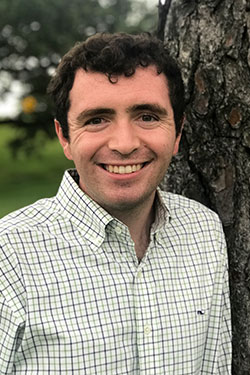 Michael McDonell
Michael McDonell
Louisiana State University
What I Do: My research focuses on the settling velocity of mud in Barataria Bay. Examining the mud settling velocity and salinity relationship will help to determine crucial marsh development strategies that will benefit the Louisiana coast. By looking at historical datasets and conducting research it will help identify ways to save the coast.
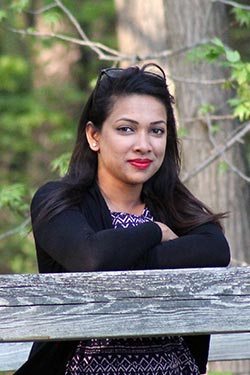 Shifat Perveen Mithila
Shifat Perveen Mithila
Louisiana State University
What I Do: I work on scheduling high performance computational problems in hybrid cloud. Also, I work as the backend website developer on the Sea Grant project, where the webportal shows freeboard construction cost and flood risk parameters on a parcel based map which helps as a decision making tool for the users to buy plots.
 Rubayet Bin Mostafiz
Rubayet Bin Mostafiz
Louisiana State University
What I Do: My research focus is on risk assessment of natural hazards in Louisiana, with the goal of enhancing environmental, social, and economic resilience of our state. I will project annual and per capita property and crop losses for each hazard (flood, tornado, hurricane, hail, lightning, drought, extreme heat, extreme cold, sea level rise, subsidence etc.) by 2050 at the census block level, while considering changing population, land use, and climate.
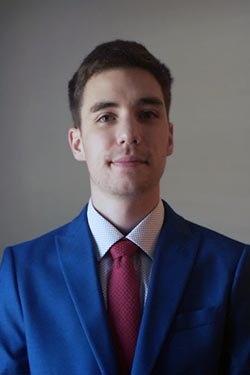 Nathan Mulvihill
Nathan Mulvihill
Louisiana State University
What I Do: I’ve researched two projects, one dealing with hazard disclosures in real estate, and the other dealing with the clean water act application in the state. The first dealt with researching what kind of disclosures did each Gulf State require in order to sell property. It is part of a larger project aimed at mitigating the damage done by natural disasters with the hopes that a more informed buyer would think twice about buying property in a flood zone. The second dealt with reviewing the necessary regulations for the Shrimp industry with a focus on the Clean Water Act requirements and Coastal Use. I’ve also started research on the National Flood Insurance Program.
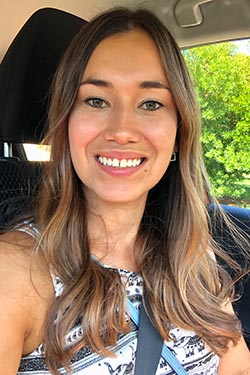 Diana Munoz
Diana Munoz
University of New Orleans
What I Do: While completing all the courses required for the Master, I will perform research for a project on sediment diversion, mostly focusing on plans to reconnect the Mississippi river to its wetlands. I will investigate about sediment transport, processes that influence beach development, various ecosystem services and river delta formations, marshes and others. My research will also include how to increase sediment retention in receiving basins and minimize erosion in bays and estuaries.
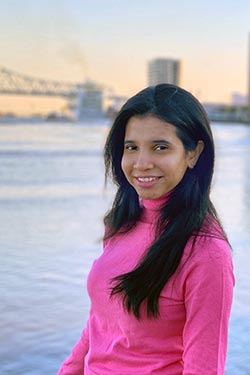 Jeenal Bhupesh Patel
Jeenal Bhupesh Patel
Tulane University
What I Do: Currently, I am working on a few projects of Covid-19.
Detection of SARS-CoV2 RNA in wastewater using ultrafiltration, using RT-qPCR assays. The aim of this project to identify possible risk factors of Covid-19 in the association of water transmission or fecal-oral route transmission. Assessment of Microbial activity in raw water samples to identify the health risk associated with many bacterias.
The Skin You’re In – As a content designer, we are using the social media platform to spread awareness about Covid-19. The organization is design to educate and support the African American population as the mortality rate was higher during the beginning of the pandemic.
The effect of a pandemic on women and children associated risk factors such as assault and violence. Literature review of articles and quantitative and qualitative data analysis.
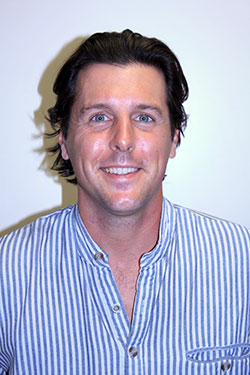 Bennett Price
Bennett Price
University of New Orleans
What I Do: Many sound producing fishes are ecologically, commercially, and culturally vital to Louisiana estuaries and coastal communities. My research focuses on estuarine spawning fishes’ response to freshwater inputs from existing spillways and planned sediment diversions. I hope to assess impacts of freshwater diversions on fish spawning and fishery resiliency. I will also explore how muscle mass and fish size relate to overall organism condition and call type and if this can be used to identify fish by size and condition with known abiotic parameters. Thirdly, I will use otolith microchemistry to identify when mature fish were exposed to specific freshwater sources.
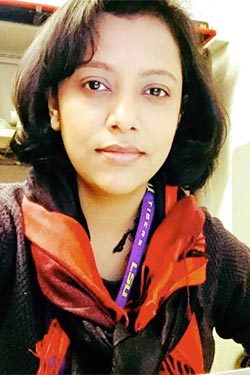 Shalina A. Shahin
Shalina A. Shahin
Tulane University
What I Do: Gulf of Mexico’s marine and estuarine ecosystems are being threatened by anthropogenic and natural disturbances. As in many parts of the world’s coastal environments, fresh surface and ground water resources, the most valuable sources of Louisiana’s coastal water supplies are vulnerable to water contamination. Water quality problems not only affect the sustainability of drinking water supplies, the commercial and recreational use of coastal fresh and marine waters, it also affects the safety of the seafood supply, a major economic driver and cultural icon of Louisiana. Therefore, my research combines laboratory and field studies for integrated water and health monitoring for advancing and strengthening the resilience of coastal areas.
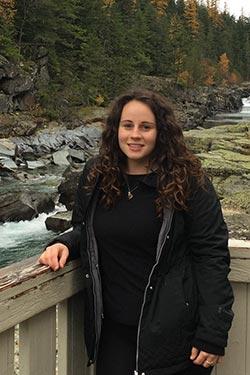 Heather Smith
Heather Smith
Louisiana State University
What I Do: My current research utilizes a combination of physiological and genomic data to answer questions concerning the evolutionary responses in multiple populations of the eastern oyster, Crassostrea virginica, to hypoxic stress.
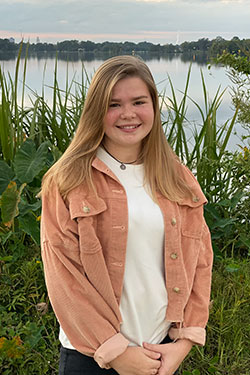 Callie Snow
Callie Snow
Louisiana State University
What I Do: My research focuses on the development and toxicity of cyanobacteria harmful algal blooms (CyanoHABs) in Lake Pontchartrain (LP). Cyanobacteria is a prokaryotic microorganism with photosynthetic and toxin producing abilities that occurs naturally in the system. When opened, the Bonnet Carré Spillway (BCS) introduces nutrient-rich fresh water into nutrient-poor LP. Conditions such as excess nutrients, warm temperature, and calm waters support the proliferation of CyanoHABs. Since the BCS opened twice in one year (2019) for the first time, there is a unique opportunity to study the impacts that the timing and duration of the BCS has on the development and toxicity of CyanoHABs.
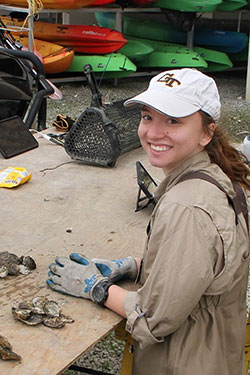 Lauren Swam
Lauren Swam
Louisiana State University
What I Do: My masters project is assessing the viability of strategically placing broodstocks of oysters in regions where they are predicted to optimally grow and survive despite spatial and temporal variability and impacts from climate change. My project uses a two-pronged approach to accomplish this. First, I am defining oyster resource zones in Louisiana based on local water quality to create a map of areas suitable to oyster growth, reproduction, and survival over a range of conditions. Second, I am studying the salinity tolerance of unexamined populations of oysters from potentially low salinity areas across Louisiana coast to test for population-specific adaptation.
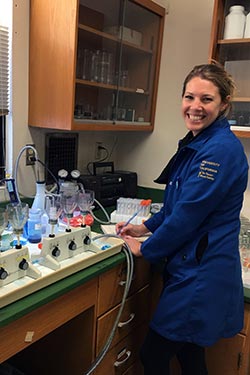 Julia Anne Sweet
Julia Anne Sweet
University of Louisiana at Lafayette
What I Do: Through my previous work as a staff research associate I was introduced to the structure of running a research laboratory, the adventure of sea-going research cruises, and the mighty phytoplankton. Now, at the beginning of a PhD, I find myself learning to work in highly variable, dynamic estuary environments, and developing a greater understanding for phytoplankton communities—including species associated with harmful algal blooms. I look forward to expanding my research interest to encompass food webs, by investigating how concomitantly changing environmental conditions effect phytoplankton and the oysters that feed on them.
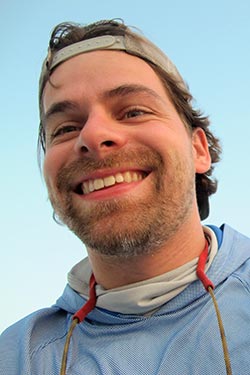 Zachary Topor
Zachary Topor
University of Louisiana at Lafayette
What I Do: My dissertation investigates the impacts of hurricanes on coastal zooplankton communities. Hurricanes represent large environmental disturbances to coastal communities. In the ocean, an important link between primary producers and higher order consumers are microscopic animals that drift in the currents called zooplankton. My primary aim is to resolve how hurricanes alter zooplankton communities. Using post-Hurricane Harvey data and historical samples from the northwestern Gulf of Mexico as model ecosystem, I hope to identify potential mechanisms of disturbance in order to predict how zooplankton will respond to future extreme storm events.
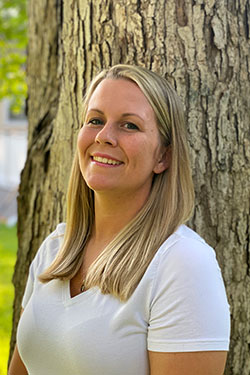 Caitlin Turner
Caitlin Turner
Louisiana State University
What I Do: At Louisiana State University, I am researching the physical drivers, such as wind, tides, and river discharge, on estuarine circulation and algal bloom toxicity on Lake Pontchartrain. The main objectives are to quantify these drivers effect on water transport time, and to characterize the phytoplankton community adaptation response to these drivers. This research is interdisciplinary and will involve a combination of field measurements and numerical modeling. This project will provide a baseline understanding of how freshwater inputs affect water quality, which allows us to understand the conditions that result in harmful algal blooms in the estuary.
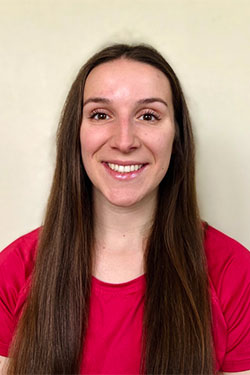 Sophie Vincent
Sophie Vincent
Louisiana State University
What I Do: We propose to test the hypothesis that organic mass accumulation rates in Louisiana marshes are related to sea-level fluctuations in Louisiana. This will be accomplished by quantifying organic and inorganic mass accumulation rates over time from radiochemically dated cores extracted in key locations in Barataria Bay. We will focus on brackish and saltwater marshes near the Mid-Barataria Sediment Diversion, as this information will be useful for how marshes may respond to increased inundations and sediment delivery expected during spillway operation.
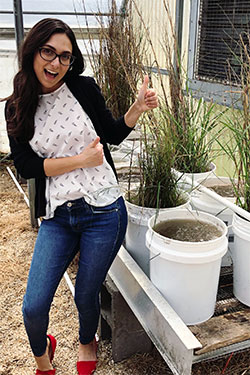 Alexandra Woods
Alexandra Woods
Nicholls State University
What I Do: Persistent plastic pollution can be ingested by wildlife or broken into smaller pieces called microplastics (100nm-5mm). Research that explores how microplastics influence aquatic freshwater vegetation health and growth is an emerging field. My research specifically focuses on how aquatic vegetation can be used to sequester microplastics from surrounding surface water. To determine if the sequestered microplastics influence vegetation photosynthesis and growth, I am measuring the amount of microplastics sequestered, vegetation growth, and photosynthetic behavior. I am also solidifying a microplastic processing protocol for use in future studies to help other scientists efficiently isolate microplastics from vegetative tissues and surface water.
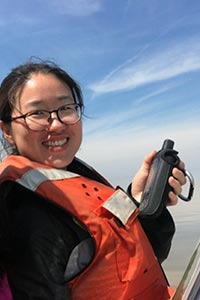 Le Zhang
Le Zhang
Louisiana State University
What I Do: Account for all significant physical parameters in carbon flux calculation among atmosphere, ocean and sediment in coastal region through numerical modeling. Disentangling the combined effects from wetland, river, wave, tide and weather conditions that shaped the carbon pathway in Louisiana inner shelf by validation between observations and model results.

